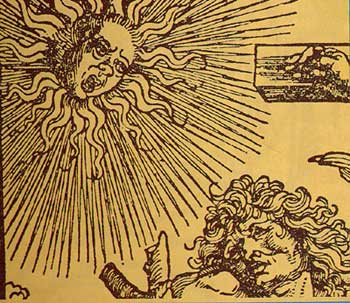Vaastu Shastra
-
Geeta Verghese
The ancient Indian architectural science of Vaastu Shastra is based on precepts laid down thousands of years ago in the Puranas and Vedas. Vaastu Shastra, which means the science of the built area, lays down rules to create ideal conditions for living, by
connecting individual life with cosmic life. Vaastu represents an evolved world-view in which humans, plants and animals can live in kinship.
Man does not inhabit this earth alone; He inhabits ‘akasham’ or space. He is linked with his Shakti or energy to other energy forms. He is part of an eternal cycle of life and death, which is known as ‘Kaala’ (time). Vaastu is therefore about the built environment
and its harmony with the energies of the cosmic universe.
‘Akasham’ or Space.
Vaastu Shastra deals with four kinds of spaces - space within human form, constructed space, terrestrial space, and cosmic space. An architect with an insight of Vaastu Shastra achieves harmony between all these spaces, and in the process strives to create
a microcosm in the built-up space that replicates the qualities of the macrocosm. The concepts of Vaastu Shastra result in designs for houses, which are beneficial to the body and mind of the dweller.
Vaastu Shastra encompasses the phenomenon of the Pyramids. Experiments carried out on small pyramid models have proved that pyramids are energy generators at the centre. According to Vaastu Shastra, shapes like square and rectangle are conducive for safety,
completeness, and stability. Nowadays, architects are introducing round & triangular shapes in the structures they construct. This is prohibited in Vaastu Shastra.
‘Shakti’ or Energy
The Sun, as our ancestors realised, is energy, the only source of light and heat for humans and all other living beings. It directs and sustains life on earth. Therefore, the Sun, especially the rising Sun is like God, and its direction of rising is considered
pious and is taken as a point of reference. If we face the rising sun, the facing direction is the East. Therefore, the effect of the direction affects the building and ideally the entrance to a dwelling should be east facing.
‘Kaala’ or Time
Many of the rules of Vaastu Shastra are attributed to cosmological considerations - the sun's path, the rotation of the earth, its magnetic field, etc. The body is considered a magnet with the head, being considered the North Pole and the feet the South
pole. Hence sleeping with one's head in the North is believed to cause a repulsive force with the earth's magnetic North and thus considered harmful. Bedrooms are therefore designed keeping this in mind.
Along with guidelines relating to construction, Vaastu Shastra also prescribes certain guidelines for selection of a site, such as, avoid water logged land or one that is too close to graveyards or hospitals. Further, trees such as Amla and Coconut are suitable
for planting near a house while trees with sap should be avoided Also, the trees should be away from the building so that their shadow does not fall upon the house, thereby obstructing the beneficial cosmic radiations found in the sun rays. As we build modern
space saving homes, keeping in mind the principles of Vaastu Shastra helps us to live in wholesome surroundings, conducive for our well being.
Picture Pagan Sun God
